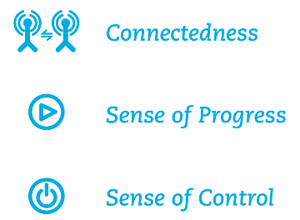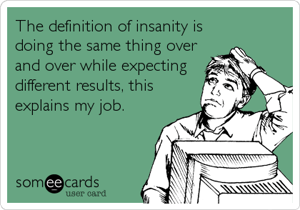.png?width=1024&name=progress%20(1).png) In Delivering Happiness the book, Tony Hsieh recalls an experiment at Zappos where he tested out the idea of creating progress. He details that when employees were given multiple milestones along the way to achieve their requirements, they reported higher levels of job satisfaction, happiness, and less stress. When an organization can more frequently affirm that their employees are on the right track, employees can gain more confidence in the work they are putting out there.
In Delivering Happiness the book, Tony Hsieh recalls an experiment at Zappos where he tested out the idea of creating progress. He details that when employees were given multiple milestones along the way to achieve their requirements, they reported higher levels of job satisfaction, happiness, and less stress. When an organization can more frequently affirm that their employees are on the right track, employees can gain more confidence in the work they are putting out there.
So, how does it really work?
 Through our happiness framework, DH describes progress as a lever used to boost happiness in the workplace. Mostly, people are happier in their jobs when they can experience a strong sense of growth in the work they are doing [no one likes to feel stagnant].
Through our happiness framework, DH describes progress as a lever used to boost happiness in the workplace. Mostly, people are happier in their jobs when they can experience a strong sense of growth in the work they are doing [no one likes to feel stagnant].
Most companies provide a sense of progress to their employees in the form of annual reviews and mid-year reviews. This traditional system is better than having no reviews, but how useful is it?
Do you remember when you were in school and had a big project due at the end of the semester? Chances are the majority of us procrastinated till the last minute. But what if we had benchmarks along the way that we had to do to complete that project? We would probably be on time, more prepared, and produce better work.
So why don’t we apply this simple way of thinking to the workplace?
 If we wrote down what someone needs to do to advance to the next level of their role [or pay raise or promotion], then we should be able to break it down and set benchmarks. In a way, it gamifies progress and keeps employees mindful of how their achievements can impact their career path.
If we wrote down what someone needs to do to advance to the next level of their role [or pay raise or promotion], then we should be able to break it down and set benchmarks. In a way, it gamifies progress and keeps employees mindful of how their achievements can impact their career path.
Not all cues for progress have to be tacked along a specific career path; they can also be integrated into the employee experience in the form of feedback.
At Bridgewater Associates, it’s a common practice for employees to deliver progress through radical transparency and feedback every day to one another. From being told they are the worst-performing manager to being called out for an unorganized presentation, nothing gets past them. Truthfully, most people are not cut out for that much honesty.
But in a company culture that uses it as a tool to bring out the best in their employees, it works to its advantage, and they embrace it [Bridgewater Associates manages about $150 billion in global investments and is the largest hedge fund by assets]. There, employees quickly learn when they’re doing a bad and good job.
Related: How to Love Criticism by WorkLife with Adam Grant
When people have more clarity around their roles, there are fewer miscommunications and less ambiguity. According to Gallup, when managers provide clear expectations, their team members are 41% less likely to feel burnout from spinning their wheels over whether or not they are doing a good job.
Keep in mind; we want to stay far away from micromanagement.
Instead, we want to ensure employees also maintain autonomy in their roles and understand they have authority in the work they are doing. The goal of providing a sense of progress is to give employees the support they need to know they are growing in the right direction.
Creating a sense of progress is a part of our happiness model, learn more about it in our Hello Doc:

Bri is the Impact Storyteller on the Delivering Happiness team. Working previously as a freelancer, her goal has always been to work with passionate people who are focused on helping individuals and businesses find their purpose. As part of DH, she now gets to accomplish that every day. Bri resides in Arizona and is lucky enough to enjoy the sun all year round.